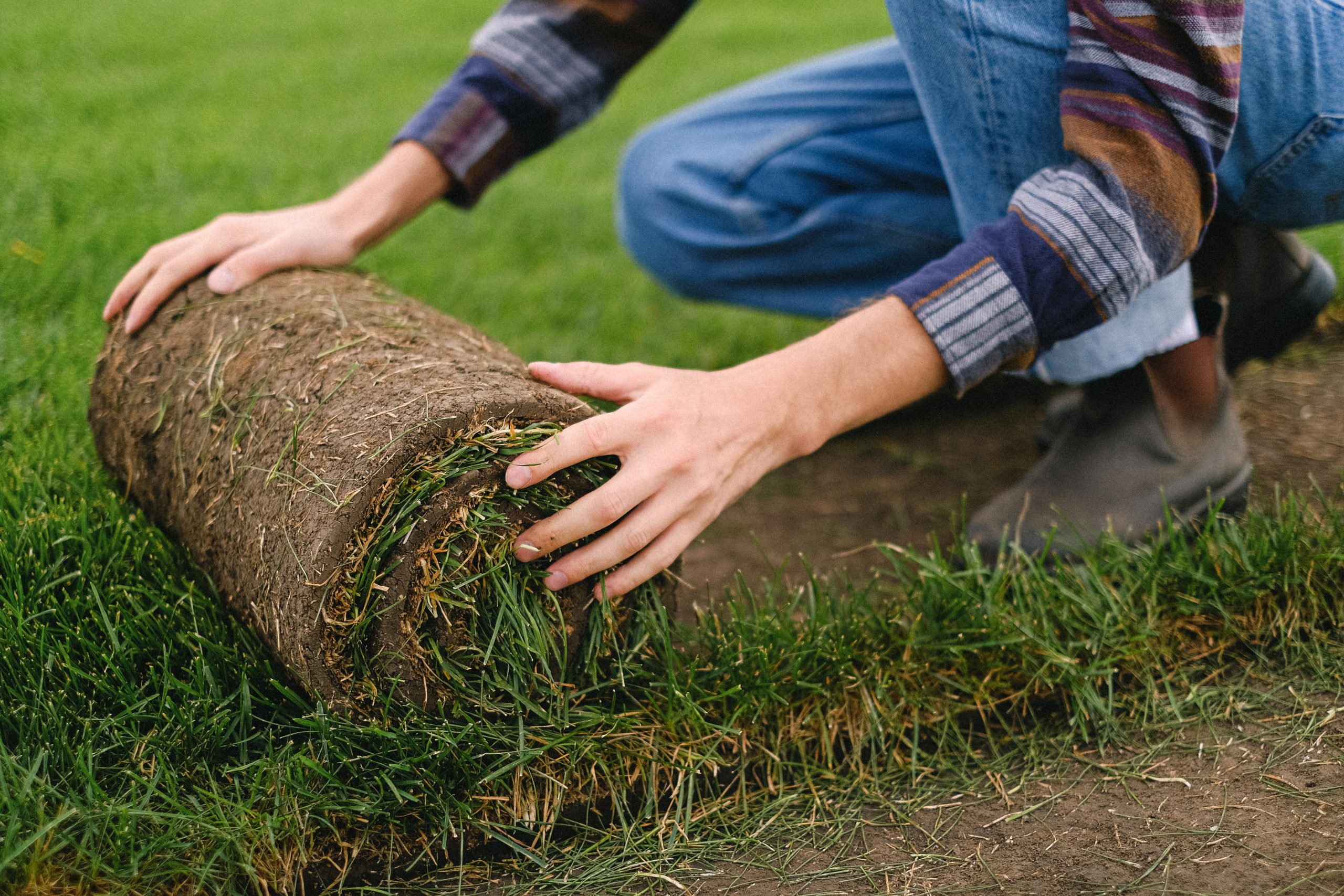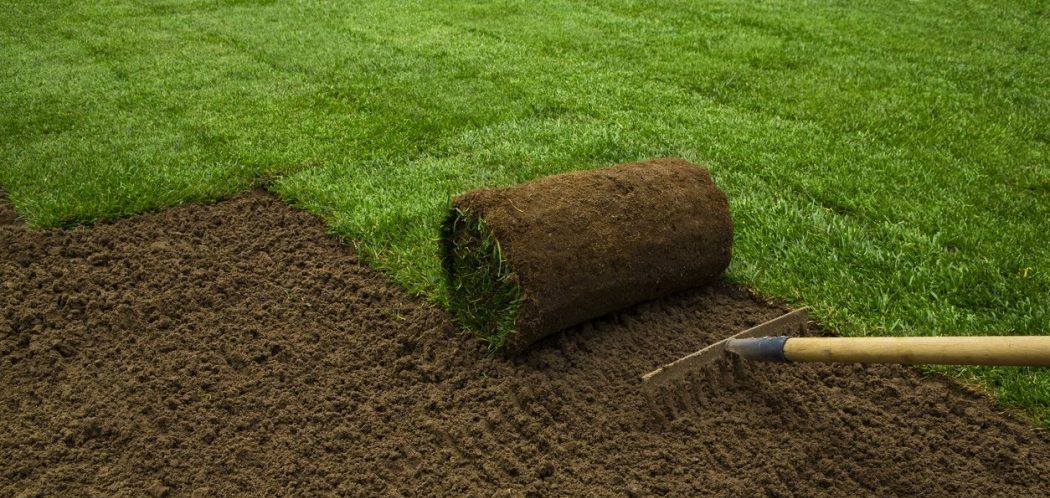Sod is a landscaping game-changer, allowing for instant lawn installation. But this convenience can quickly turn into frustration if sod’s shelf life isn’t properly managed. Understanding turfgrass viability from harvest to installation is key.
This article will explore the lifecycle, shelf lives, and proper handling of various sod types. Read on to gain holistic insight into maximizing sod freshness!
The shelf life of sod is typically 24-48 hours under ideal conditions. It’s crucial to install sod as quickly as possible after delivery to ensure it takes root and thrives. However, specific types and storage conditions can slightly alter this timeframe, making prompt installation vital.
From Farm to Yard: The Sod Lifecycle
To reap the benefits of sod, it’s useful to understand exactly how it’s produced. Sod begins its life on highly specialized sod farms utilizing specialized equipment and techniques.
Sod Cultivation
Sod production focuses on growing lush, consistent, high-quality turfgrass. Farms carefully cultivate the ideal environment for root and shoot growth to create dense, uniform sod mats. This involves meticulous soil preparation, irrigation, mowing, and other agronomic practices. Maintaining optimal growing conditions allows the grass to knit together into perfect sod carpets ready for harvest.
Many sod farms also propagate specific cultivars and grass varieties ideally suited for sod strength and transplantability. For example, specialized Bermuda grass breeds like Tifway 419 are perfect for sod production. Farms leverage grass genetics to tailor sod for top performance across different climates and uses.
Sod Harvesting
The sod harvest process is equally specialized. Sophisticated sod harvesting machines cut the turf into long rolls or square-shaped pads. Harvester blades cut 2-3 inches deep to capture the entire intact root system within the sod mat. Cut sod is gently lifted and rolled or stacked for easy transport.
Proper harvesting techniques are vital so sod experiences minimal disruption or damage. The goal is keeping the grass and roots as unstressed as possible for successful transplantation. Experienced sod farm crews know the nuances of harvest timing, depth, and sod handling for peak viability.
Transporting and Storing Sod
After harvesting, sod is loaded onto pallets and transported via truck or shipping containers. Storage conditions must be ideal during transit and while awaiting installation. Sod requires protection from dehydration, heat, cold, and excess jostling during transport. Stockpiled sod is kept in cool, shaded areas and watered as needed before installation.
The time between harvesting and installation is a sensitive period. Extended delays or improper storage decreases sod health and longevity after laying. The timeline and sod handling is carefully coordinated for optimal results.
Sod Installation
During installation, sod rolls are unrolled across prepared soil beds. Rows are laid tightly with no gaps, allowing the grass to knit together seamlessly. Once laid, sod is rolled to maximize contact between roots and soil. Timely watering activates growth and accelerates establishment. Proper installation techniques give transplanted sod the best chance for rooting and thriving in its new home.
With specialized production and proper handling, sod transplants readily after installation. But the window between harvest and laying is critical, which brings us to the key concept of sod shelf life.
The Perishable World of Sod: Understanding Shelf Life
Sod is a perishable living product, not unlike fresh produce. It has a finite shelf life and viability timeline beginning the moment it’s harvested. Sod health and transplant success depends hugely on proper storage and timely installation.
Why Shelf Life Matters
After harvesting, sod enters a fragile transitional phase. The grass and root system are cut off from their steady supply of nutrients and moisture. The sod survives only on its internal food reserves. Over time, these reserves dwindle, causing the severed sod to deteriorate. Signs of deterioration include dried out, discolored grass and dying roots.
Installing weakened, expired sod results in lackluster lawns. Grass may die out in large patches, turn brown, or never properly take root. This requires expensive resodding to remedy bare, unsightly spots. Investing in sod and effort installing it is wasted if the materials are expired.
Understanding and observing shelf life windows prevents wasted time, effort, and money. Abiding by shelf life guidelines results in vigorously growing transplants that flourish.
Shelf Life Factors
Many variables influence how long harvested sod remains viable:
- Grass species and variety: Bermudas and zoysias have shorter shelf lives than fescues and bluegrasses. Some cultivars hold up better when stored.
- Growing conditions: Healthier field-grown sod withstands storage than weak, stressed sod.
- Harvest timing: Sod cut during cooler periods lasts longer than sod harvested during hotter weather.
- Handling and storage: Sod left exposed to elements deteriorates faster than properly sheltered sod. Keeping sod moist and cool extends viability.
- Time of year: Sod stored when temperatures are moderate lasts longer than sod during weather extremes. Summer-harvested sod has shortest shelf life.
Adhering to grass type-specific shelf life windows is key. But optimal storage and handling techniques further extend viability. Now let’s dive into how long different varieties actually last!
Warm Season Grasses: Heat Lovers with Shorter Shelf Lives
Warm season grasses thrive during hot summers in southern climates. But their shelf lives are measured in days rather than weeks.
Bermuda Grass
- Regions: Southeast, South, transition zone
- Features: Fine-bladed, hardy, aggressive growth
- Shelf Life: 3-5 days maximum
Bermuda sod must be installed immediately after harvest. Its rapid growth means it deteriorates quickly during storage. Storing in shade and keeping moist extends viability a bit. But bermuda should always be installed within a week of cutting.
Zoysia Grass
- Regions: Southeast, Gulf coast
- Features: Soft, lush “carpetgrass” texture
- Shelf Life: 7-10 days
Zoysia sod has slightly longer shelf life but still just over a week. Keep zoysia shaded, cool, and moist until installation. Zoysia quickly shows stress if exposed to heat or dehydration. Timely installation maintains its top quality.
St. Augustine Grass
- Regions: Gulf coast, Florida, coastal Southwest
- Features: Broad blades, blue-green color
- Shelf Life: 5-7 days
Give St. Augustine sod ample moisture and shade to maximize its one week lifespan post-harvest. Hot dry conditions rapidly deteriorate its health so maintain cool, humid conditions when possible. Install this grass within a week for a lush lawn.
Cool Season Grasses: Greater Staying Power but Still Perishable
Cool season grasses tolerate storage a bit better but are still vulnerable to deterioration over time.
Fescue Grass
- Regions: Northern, transition zone
- Features: Fineblade, shade tolerant
- Shelf Life: 5-7 days
Fescue sod only keeps its high quality for about a week after harvesting. Avoid direct sunlight and heat exposure during storage and transit to maintain lush green color and healthy roots. For best germination and establishment, install within 7 days.
Kentucky Bluegrass
- Regions: Nationwide
- Features: Vivid green color, fine soft blades
- Shelf Life: 10-14 days
Of common sod grasses, bluegrass has the longest viable life at 2 weeks max. Keep sod moist and as cool as possible, avoiding temperature extremes. Exceeding its 2 week lifespan risks dead patches after laying.
Identifying Expired Sod
With experience, you can recognize aged sod no longer suitable for use:
- Dry, brittle, yellowing grass rather than supple green blades
- Foul odors instead of fresh earthy scent
- Mushy, brown roots vs. firm white roots
- Mold, mildew, bugs or other signs of decay
- Sections easily falling apart during handling
Trust your senses. Sod displaying these red flags will likely perform poorly despite your best installation efforts. Only use sod that appears freshly harvested.
Storing Sod for Success
Aim to install sod as soon as possible after delivery. But proper storage extends shelf life if delays arise:
Regulate Temperature
Avoid temperature extremes that stress grass. Ideal temps range from 40-80°F depending on variety.
Provide Shade
Block direct sunlight which heats and dries sod. Use tarps or shade structures if storing outdoors.
Control Moisture
Don’t let sod dry out completely but avoid oversaturated soggy sod. Mist or water as needed.
Allow Airflow
Some airflow circulation helps but avoid constant wind exposure which desiccates sod.
Minimize Handling
Limit unloading/reloading sod piles during transport and storage.
With ideal conditions, you can maximize shelf life and sod quality. But installing ASAP is still critical.
Creative Uses for Expired Sod
If sod exceeds shelf life before use, all is not lost. Some innovative applications include:
- Composting/mulching for nutrient-rich organic matter
- Topdressing berms, swales, and slopes for erosion control
- Crafting sod bricks or rolls for landscaping projects
- Recycling as green waste through compositing programs
- Using as biomass fuel for energy production
While expired sod won’t grow, it still offers useful possibilities before disposal. Think creatively!
Conclusion
Managing expectations and abiding by guidelines for specific sod shelf lives sets up landscaping success. Storing sod properly and installing within the ideal timeframe results in non-stop lawn enjoyment for years to come. Remember, sod is a perishable item requiring diligent monitoring for best results. With this knowledge, you can now confidently navigate the shelf life factors that make sod both appealing and temporally fragile!






